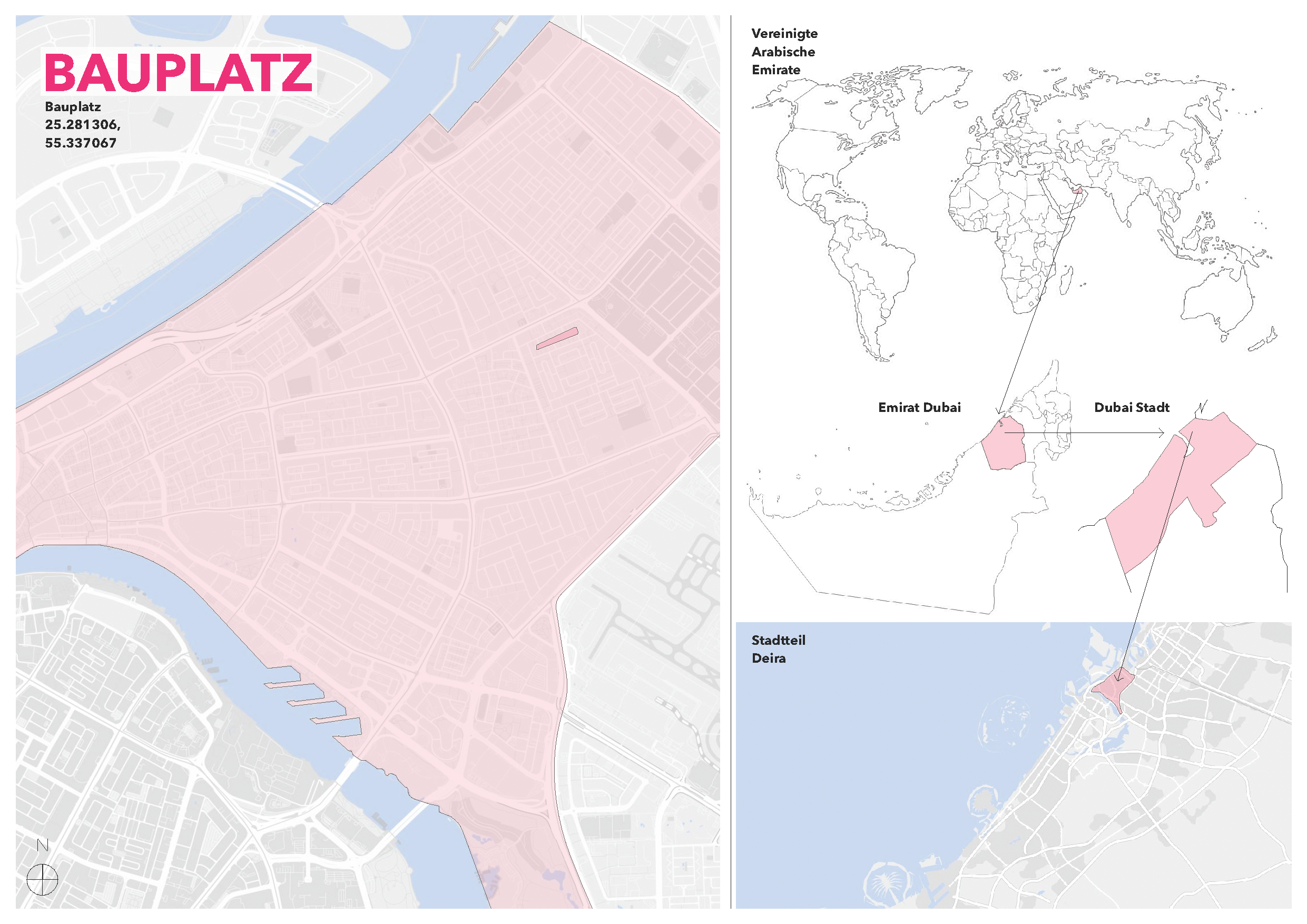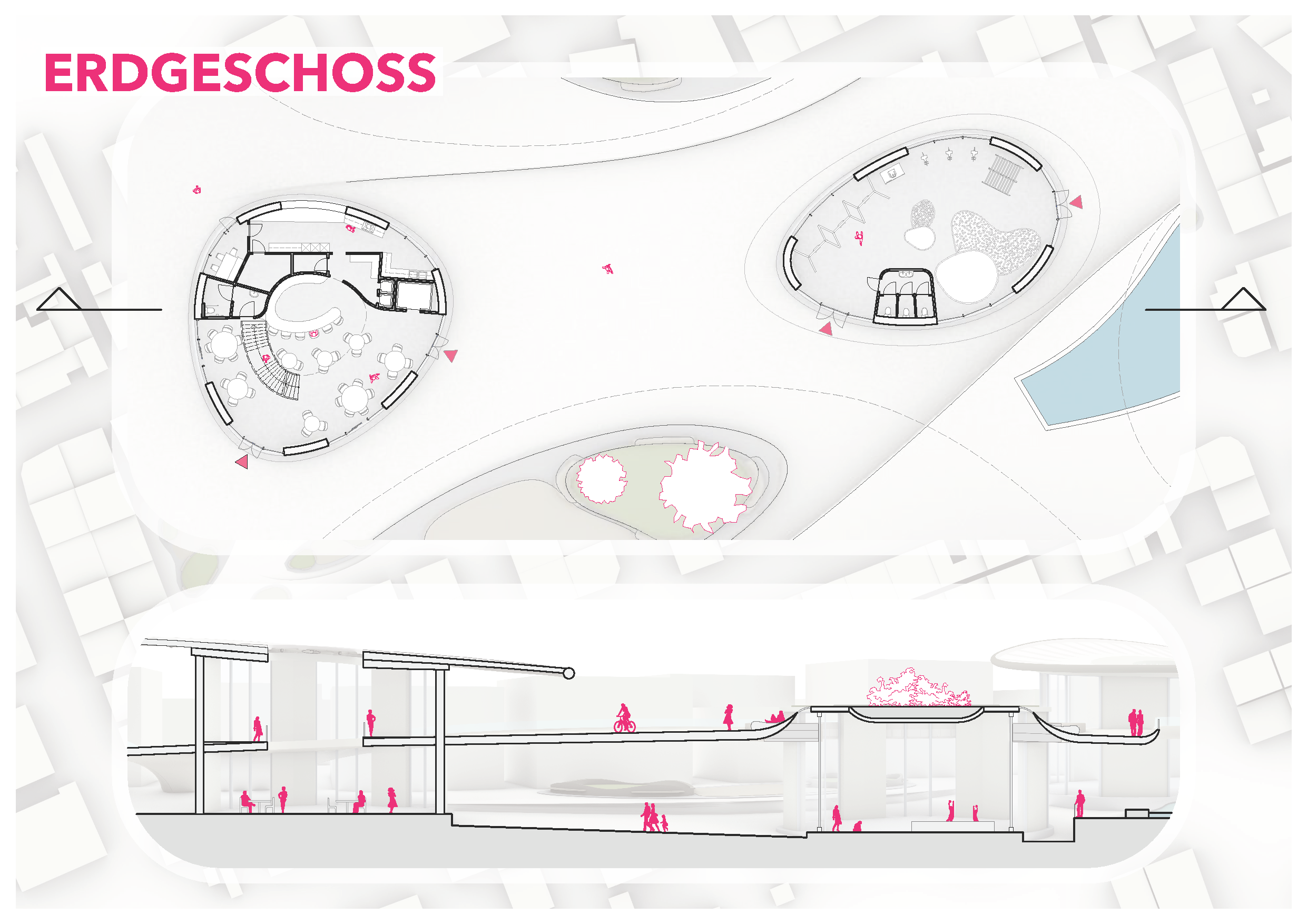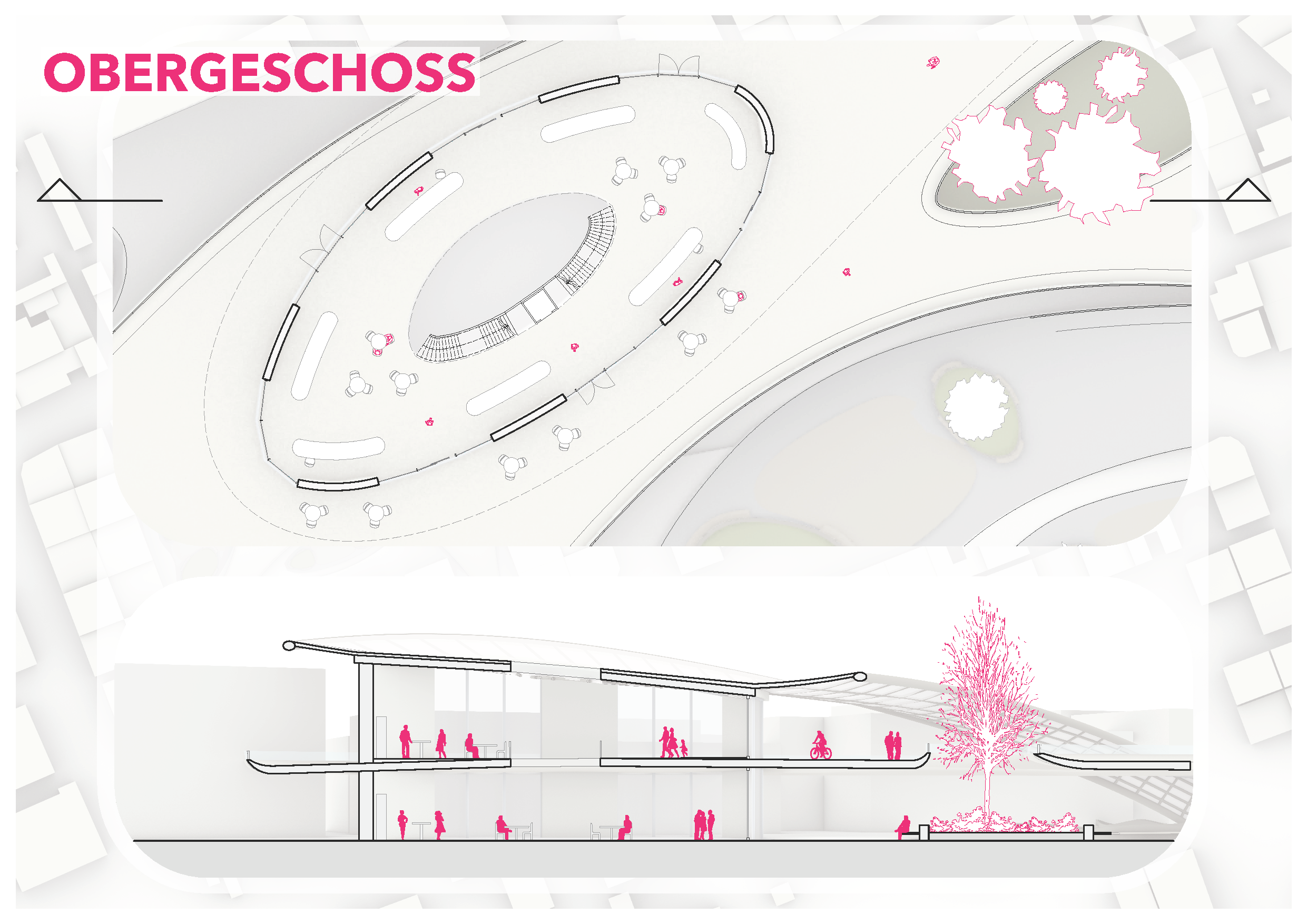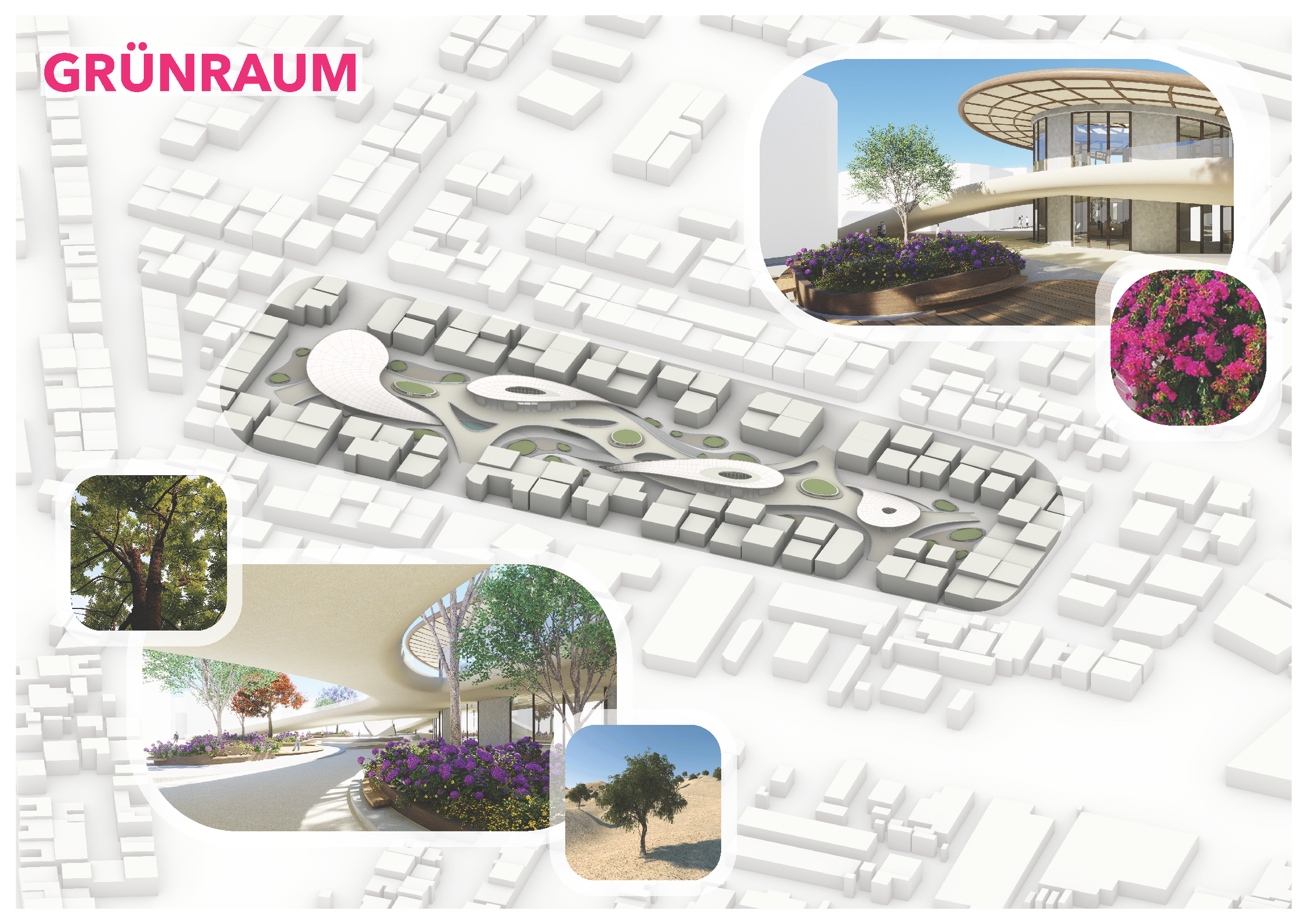Aleksandar Cosic
Architectural Designer
Dunection
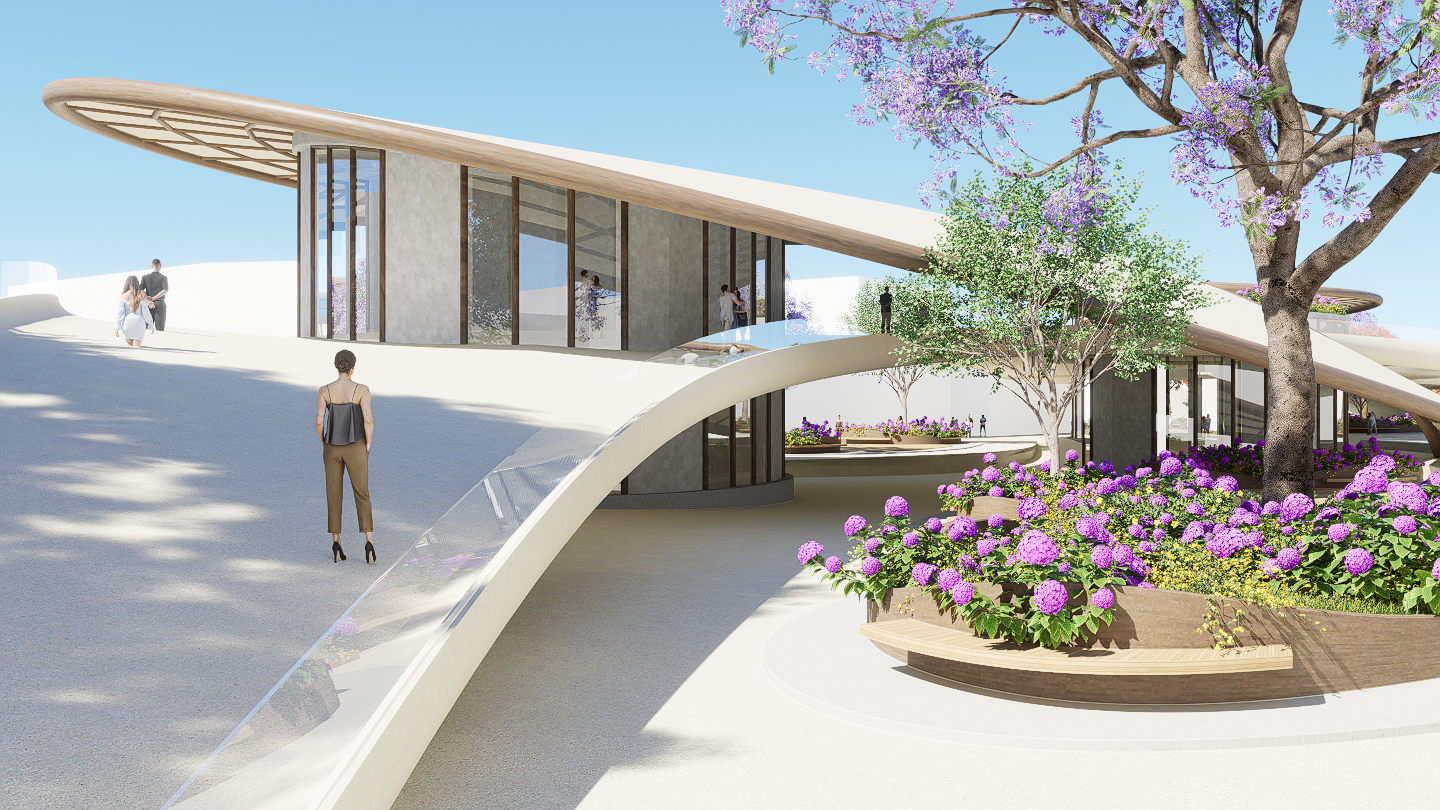
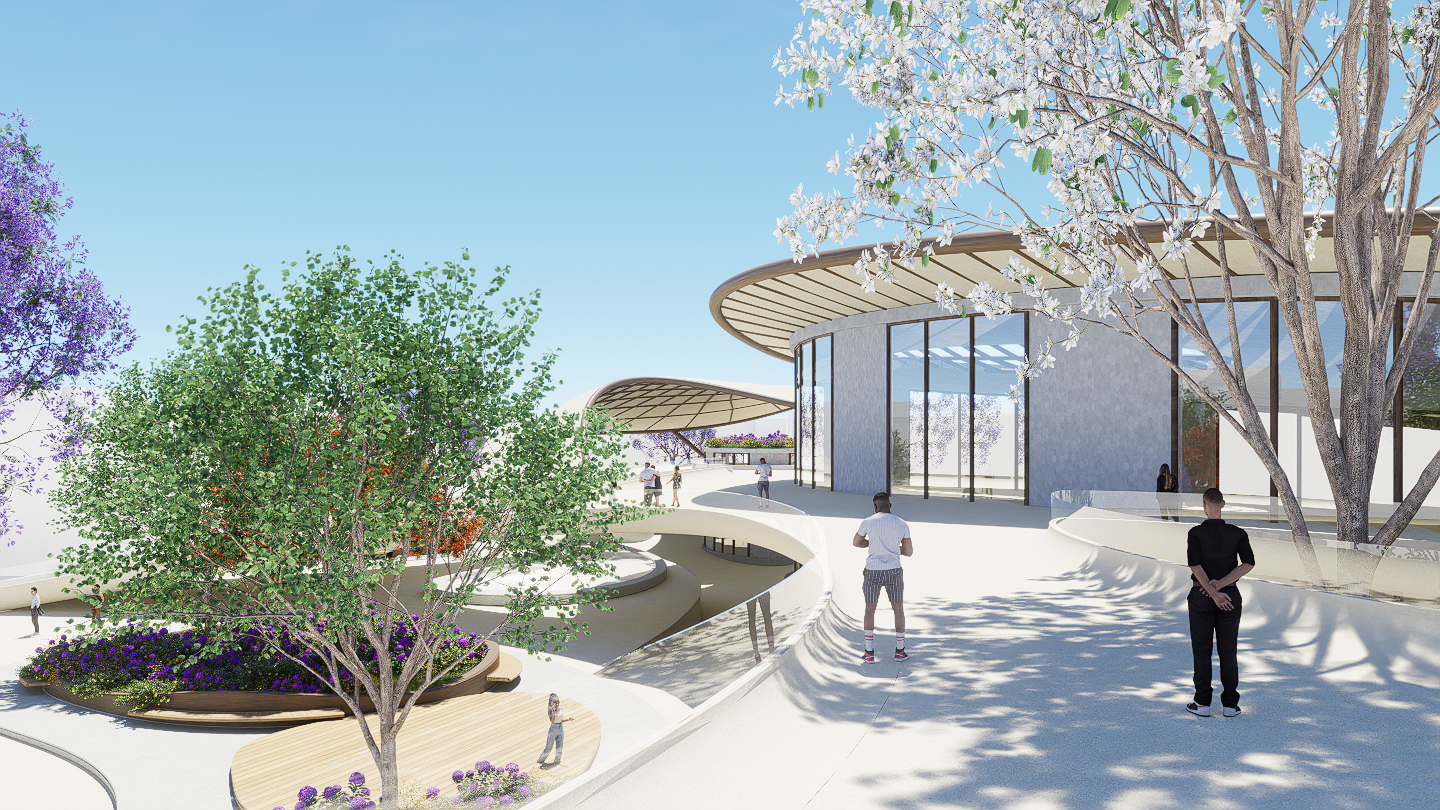
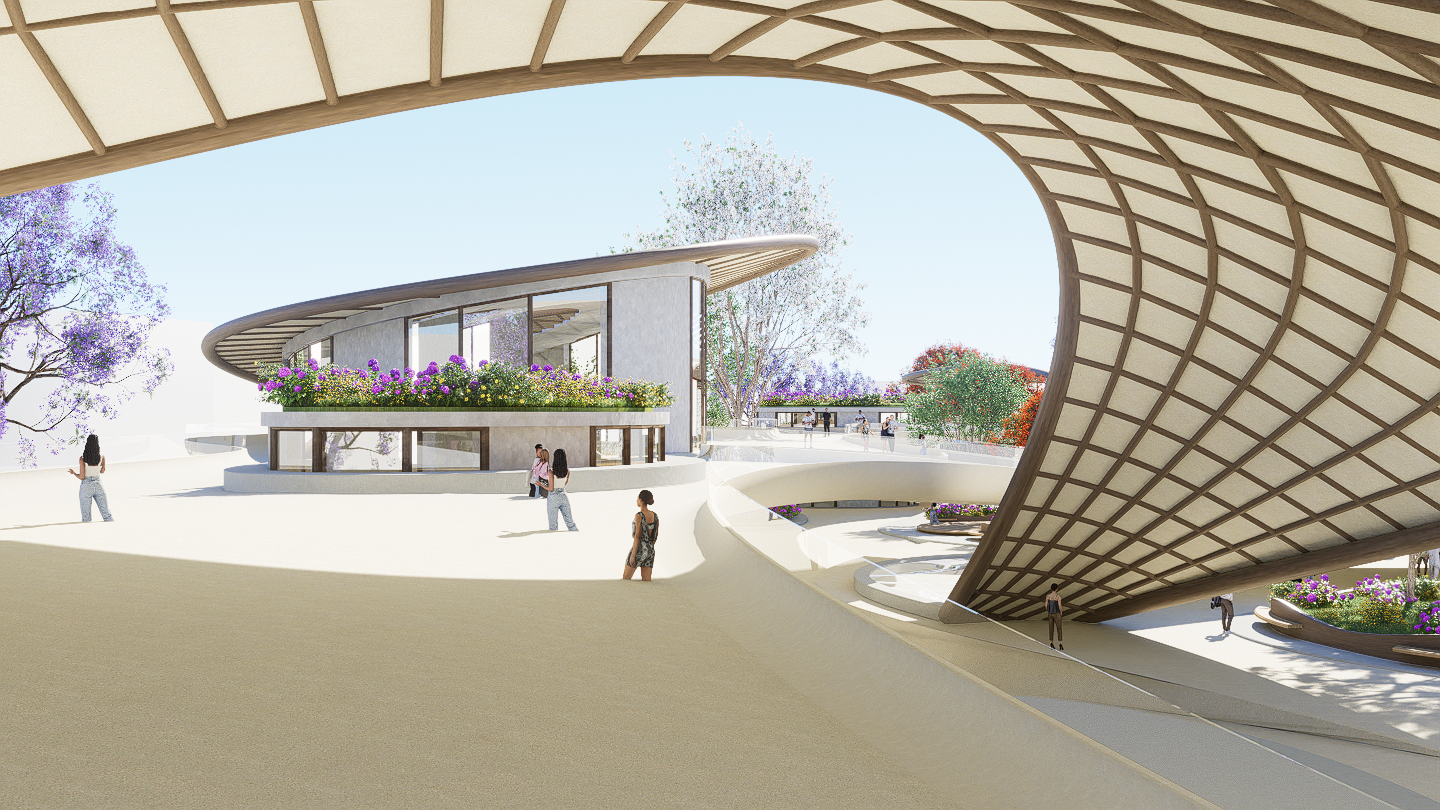
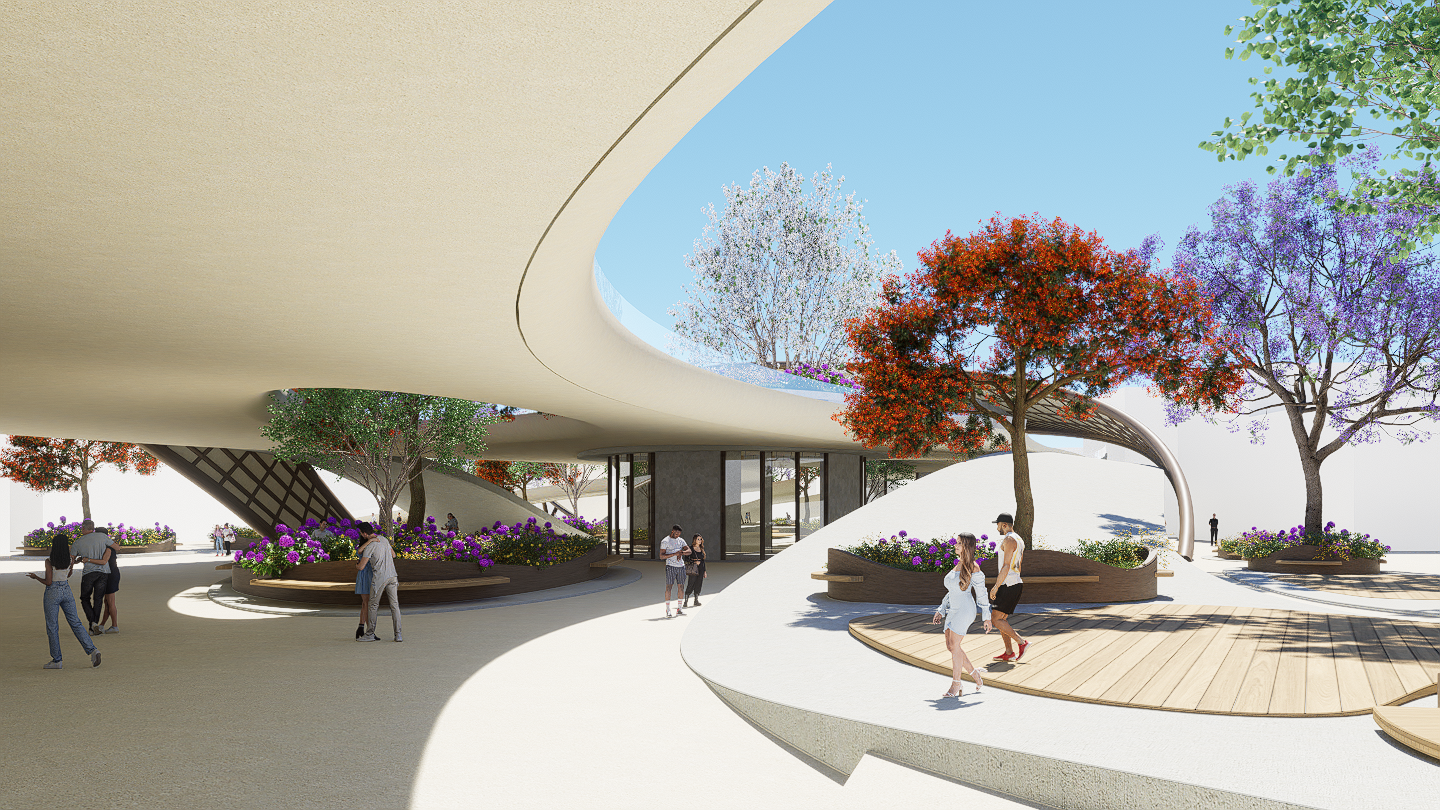
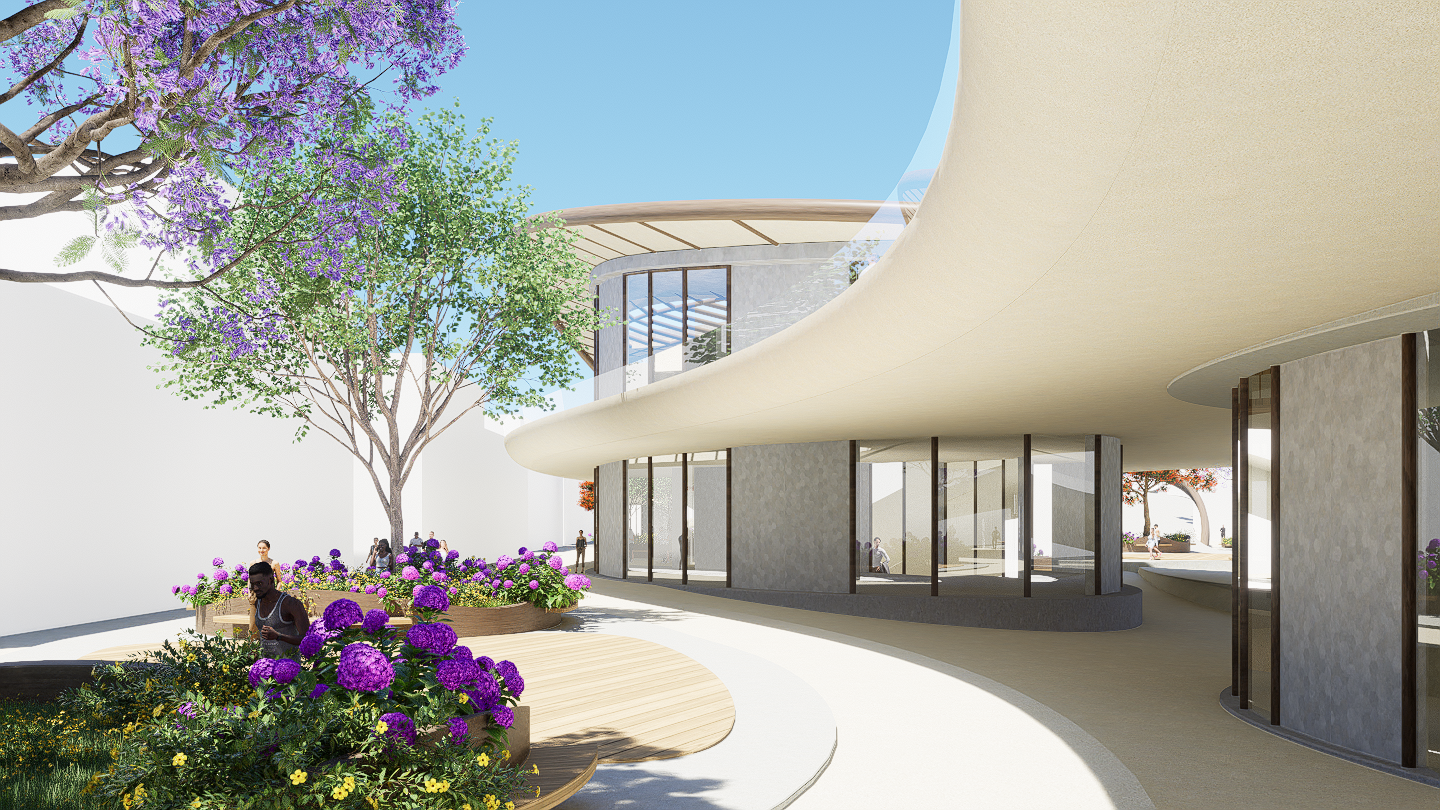
What does public life need and how can an existing city fabric contribute to a thriving social life? How much of that space has to be predefined or rather, how much does the public need to create a space for its own requirements? And how can this be achieved in an Area where the heat become so unbearable that one must hide in the shades?
Location
Deira is a historic district located in the heart of Dubai, United Arab Emirates. It is one of the oldest areas in the city and holds great significance in Dubai’s history and culture. Deira is situated on the northern bank of the Dubai Creek and is known for its bustling souks (markets), traditional architecture, and vibrant atmosphere. The site that peaked our interest is on the outskirt of the district, as there is more authenticity to be found.
Analysis
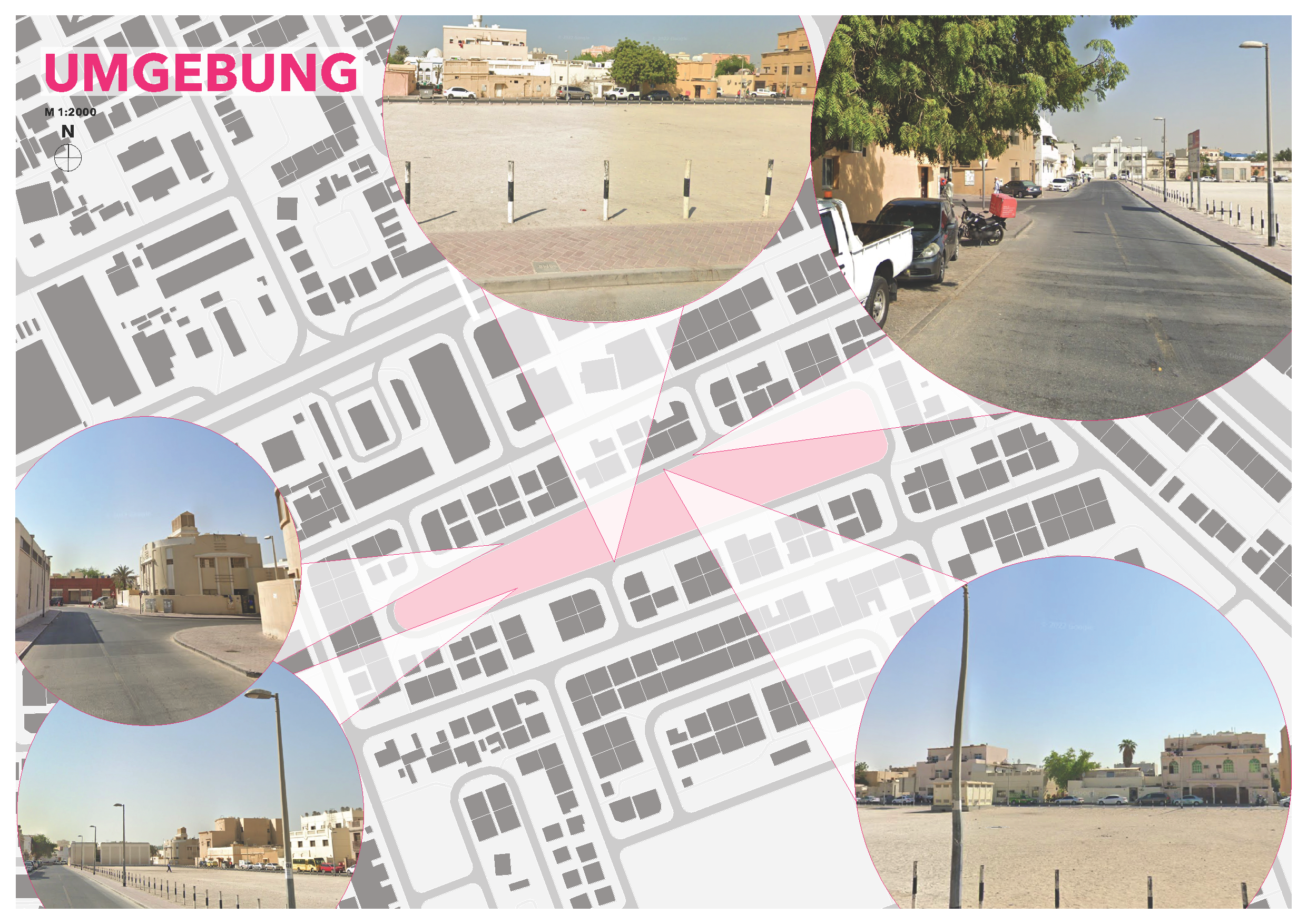
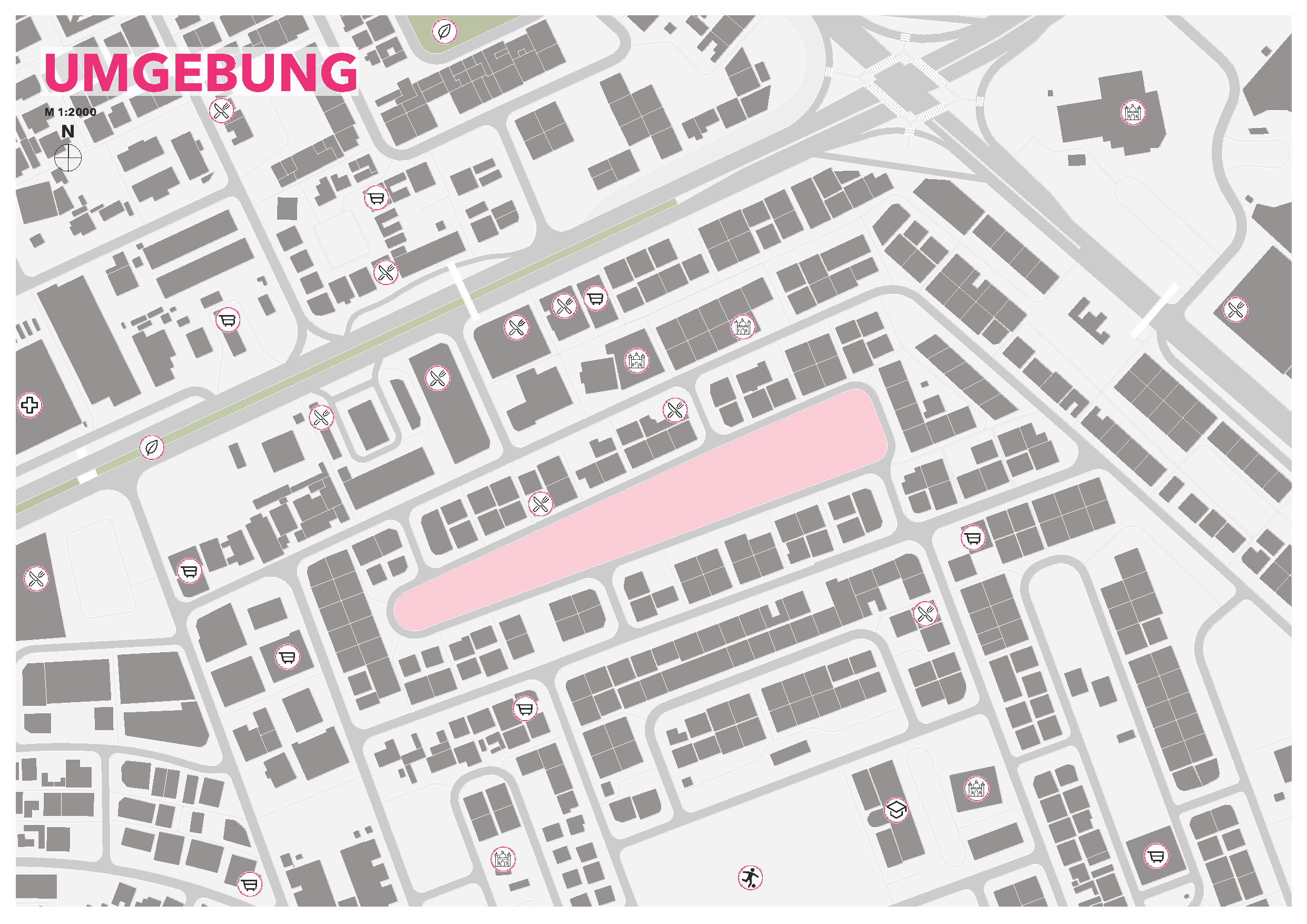
As a kind of traffic island, there are not a lot of activites one can partake in. In General, Dubai does not offer a lot of valuable public spaces that do not require some sort of consumption. Because the building site is no exception to that rule, we decided to strongly emphasize social values to this space.
Site
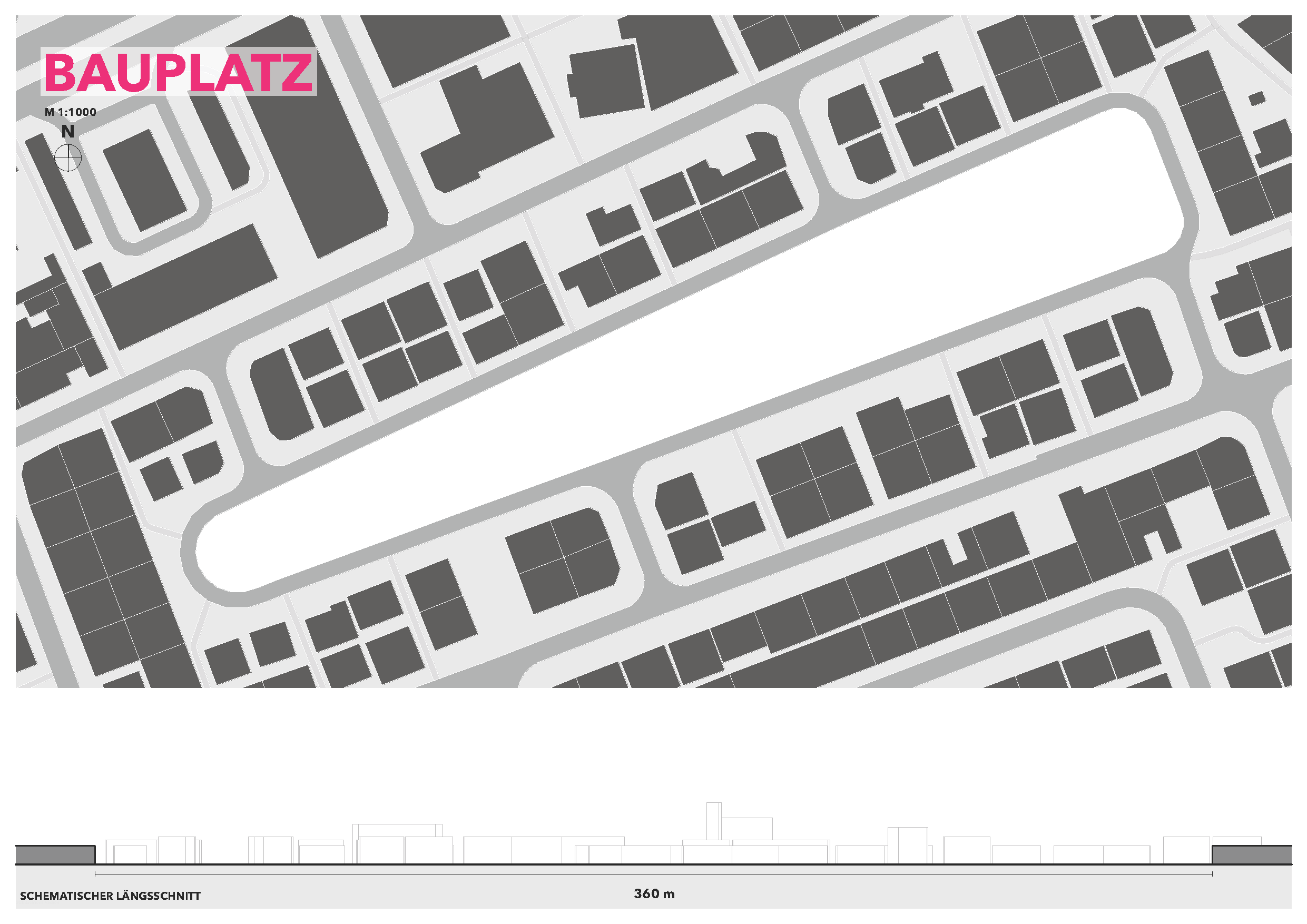
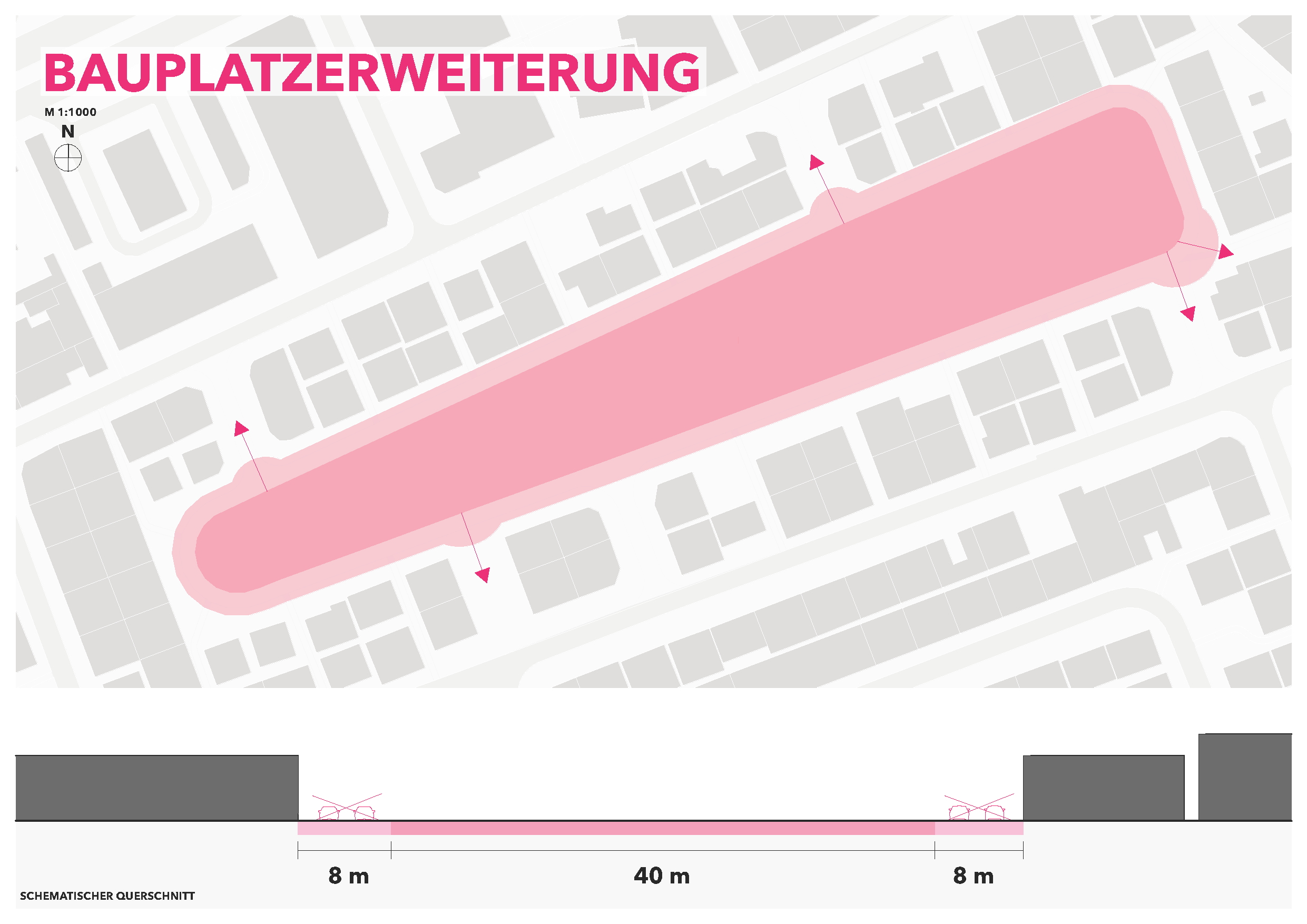
The main characteristics that make this site special are its proportions. The measurements are about 350m x 50m, which makes a very linear site that is surrounded by a street. Automobility is a very important aspect to the lives of Dubai inhabitants. Not only as a means of transport but also in a cultural context. We decided to tackle this situation by removing the street and focusing on improving the walkability.
Intention
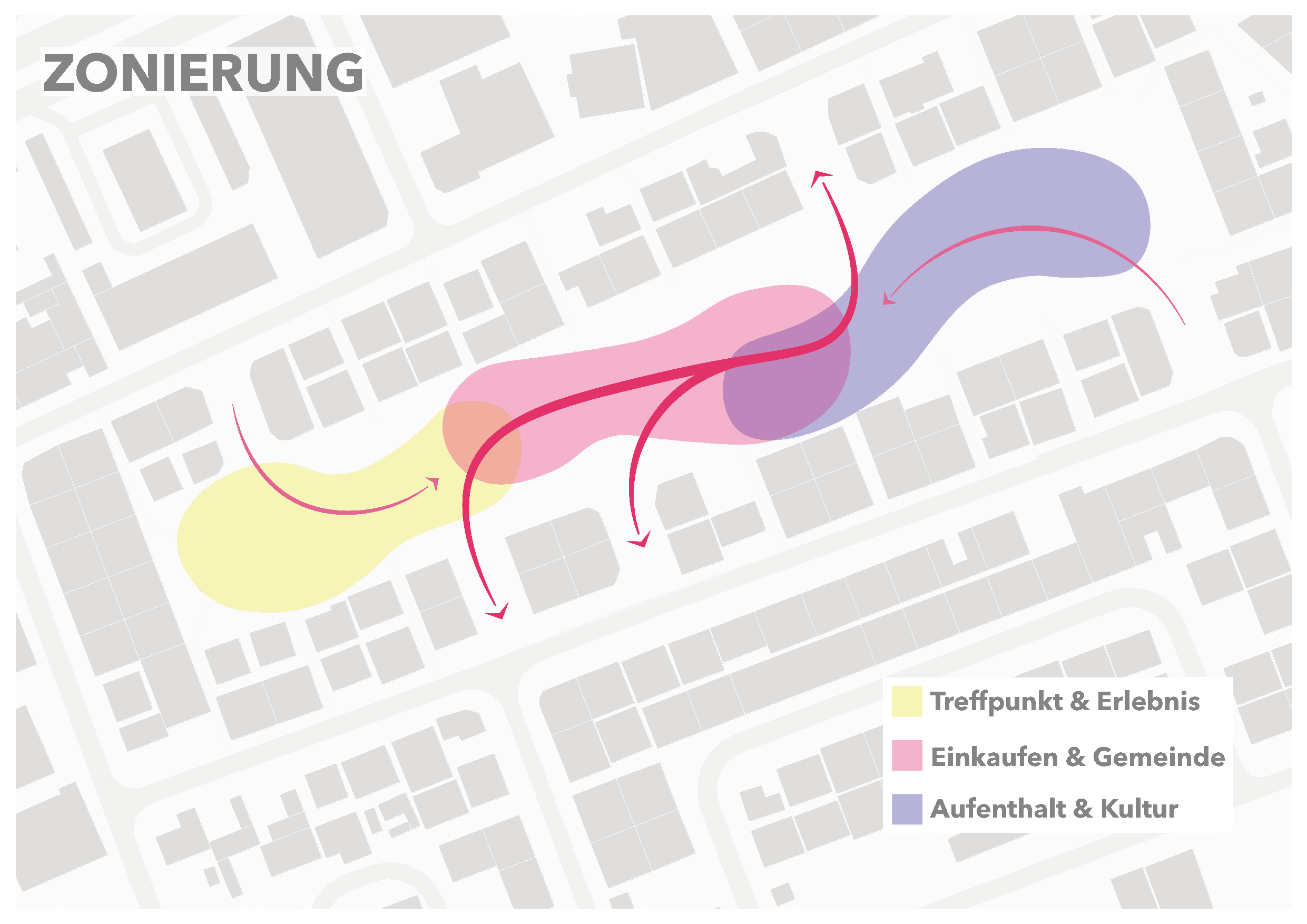
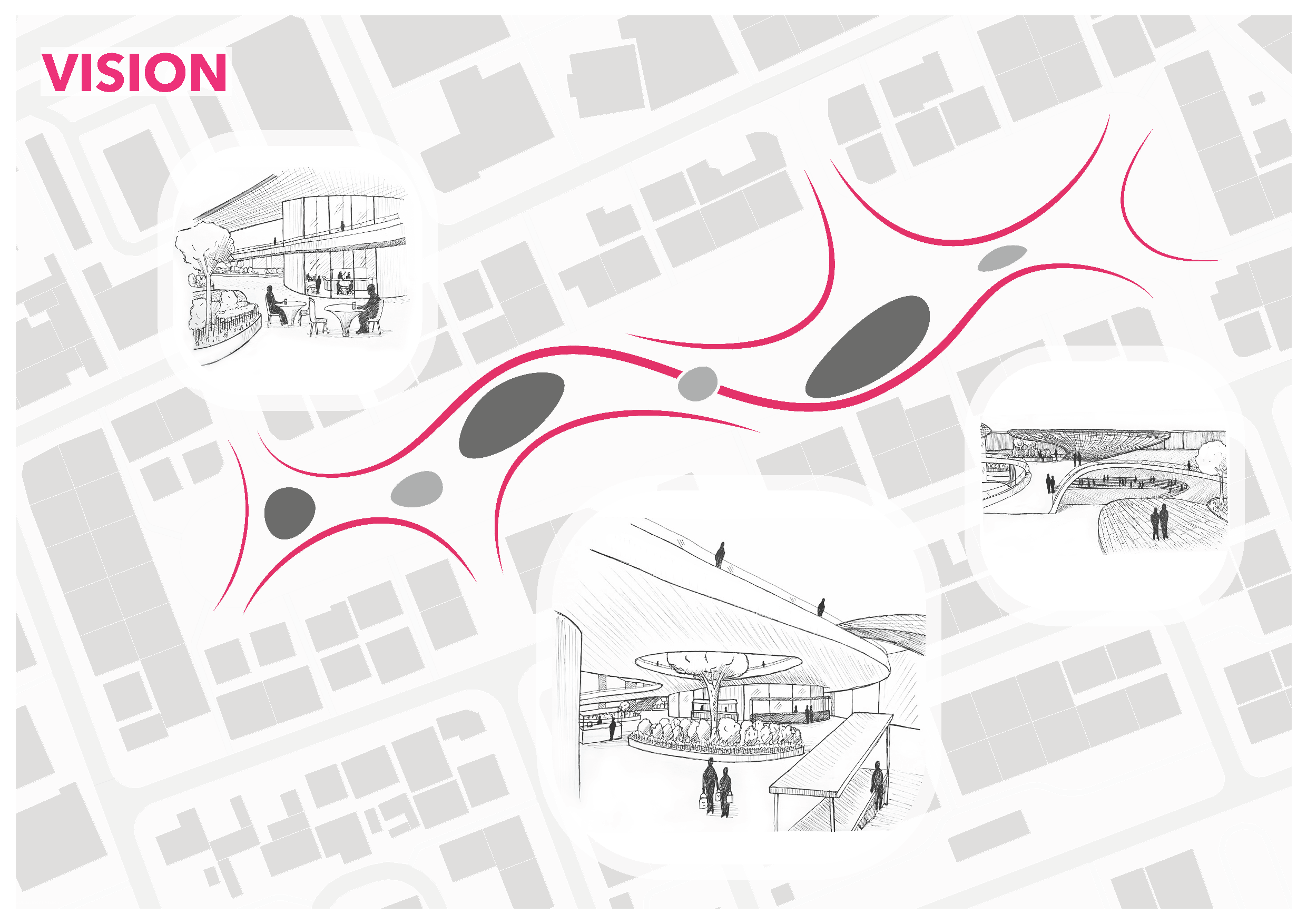
During our concept phase, we decided on focusing on:
- improving public life (activities, recreation, exploration)
- strengething the connection of the neighbourhood
- improving walkability
- offering shade
While keeping those key points in mind, we decided to split the site into three zones, where each one respectively catalyzes a type of activity. While there will be a functional difference in certain spaces, the overall structure should be a consecutive form.
Ground Floor
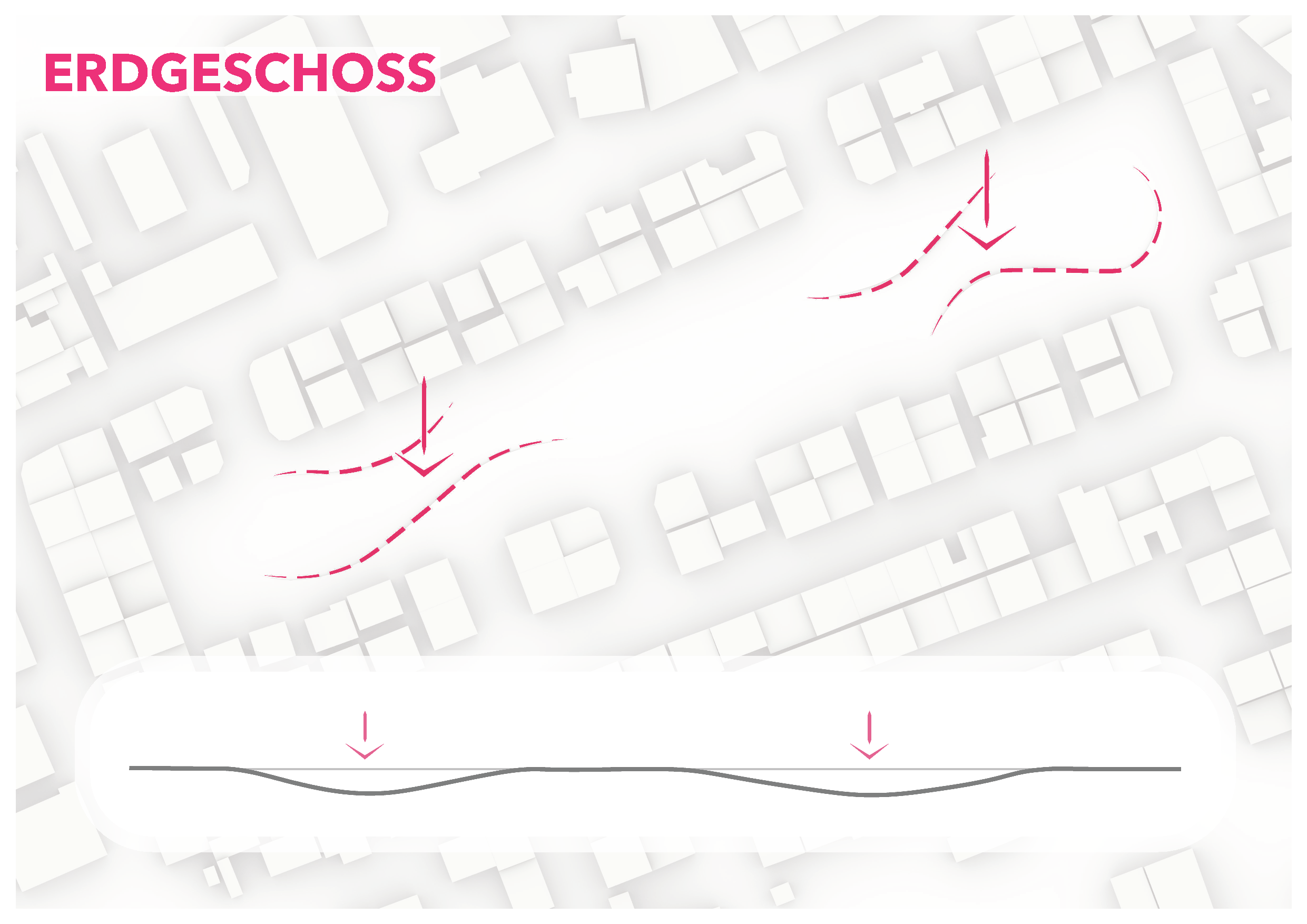
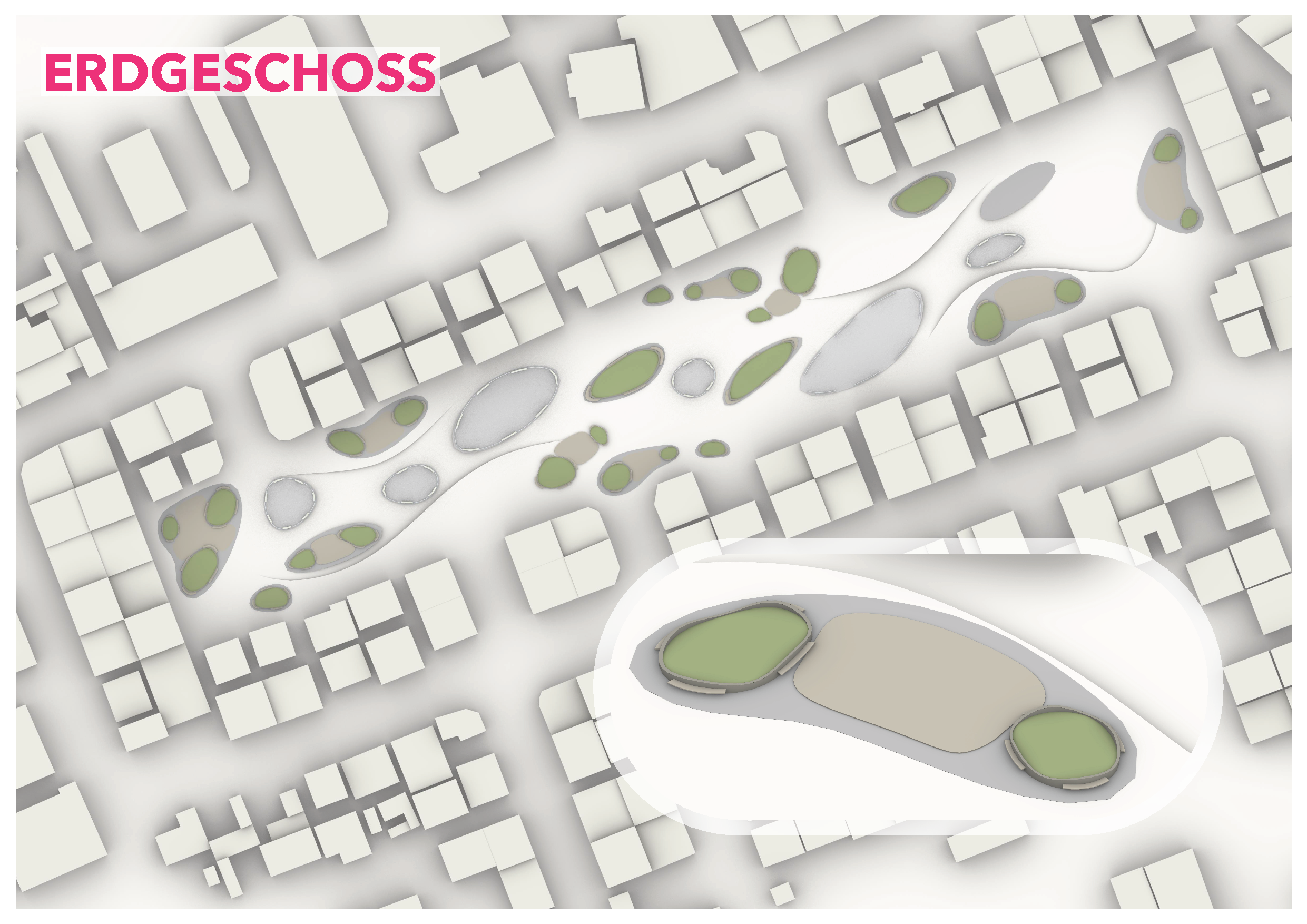
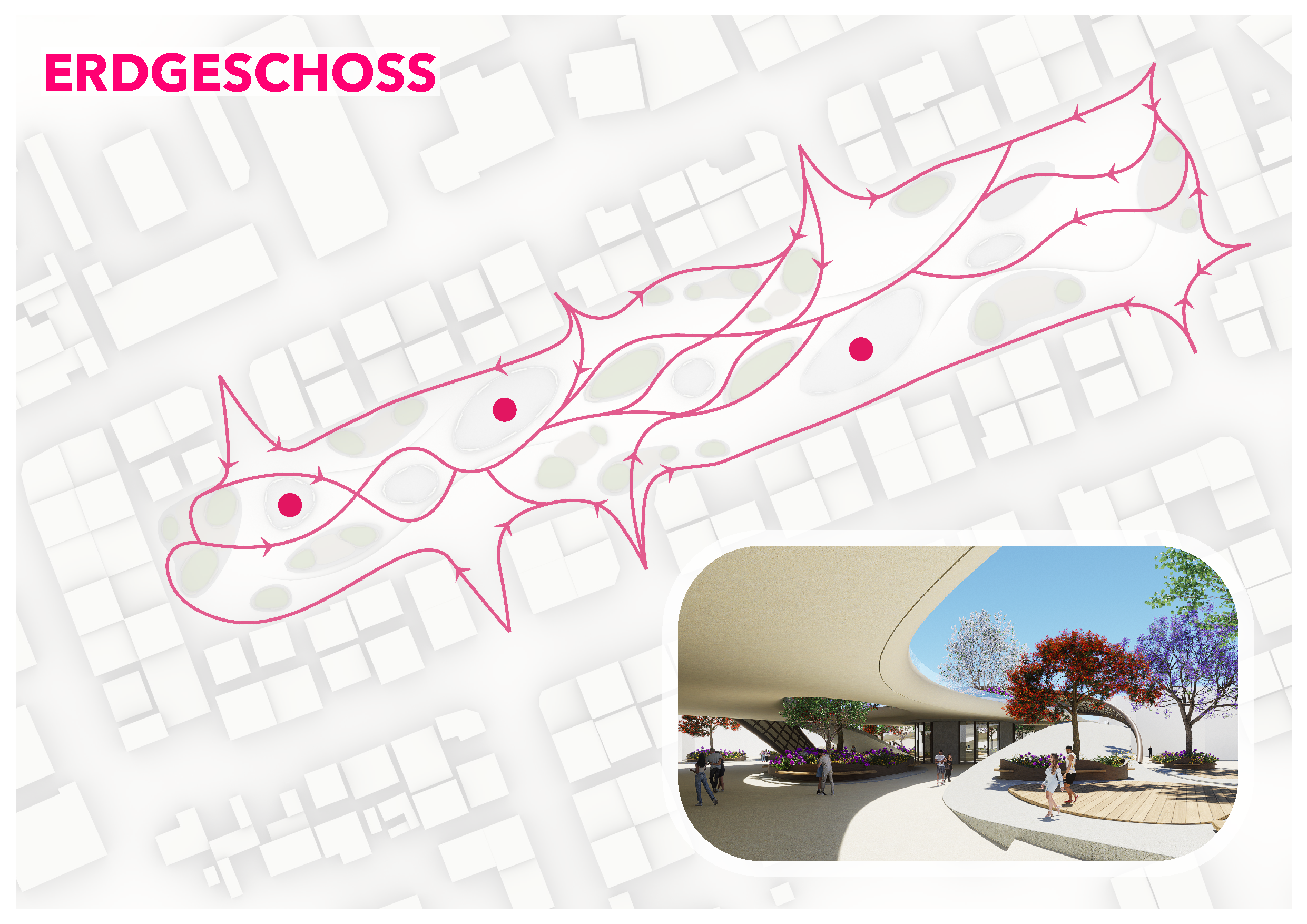
Inorder to maximize the potential of the ground floor as the plane of social interaction, we created recessing zones that imply borders which softly indicate and offer spaces for certain group sizes to gather. While working on the project we introduced a so called “blob” that became the main gesture to encompass space.
In the detailing process, we decided on creating functionally versatile buildings to ensure longevity. On the one hand we were trying to push the idea of working with positive and negative space while also integrating concepts of the field of biomimicry at multiple scales.
Ground Floor
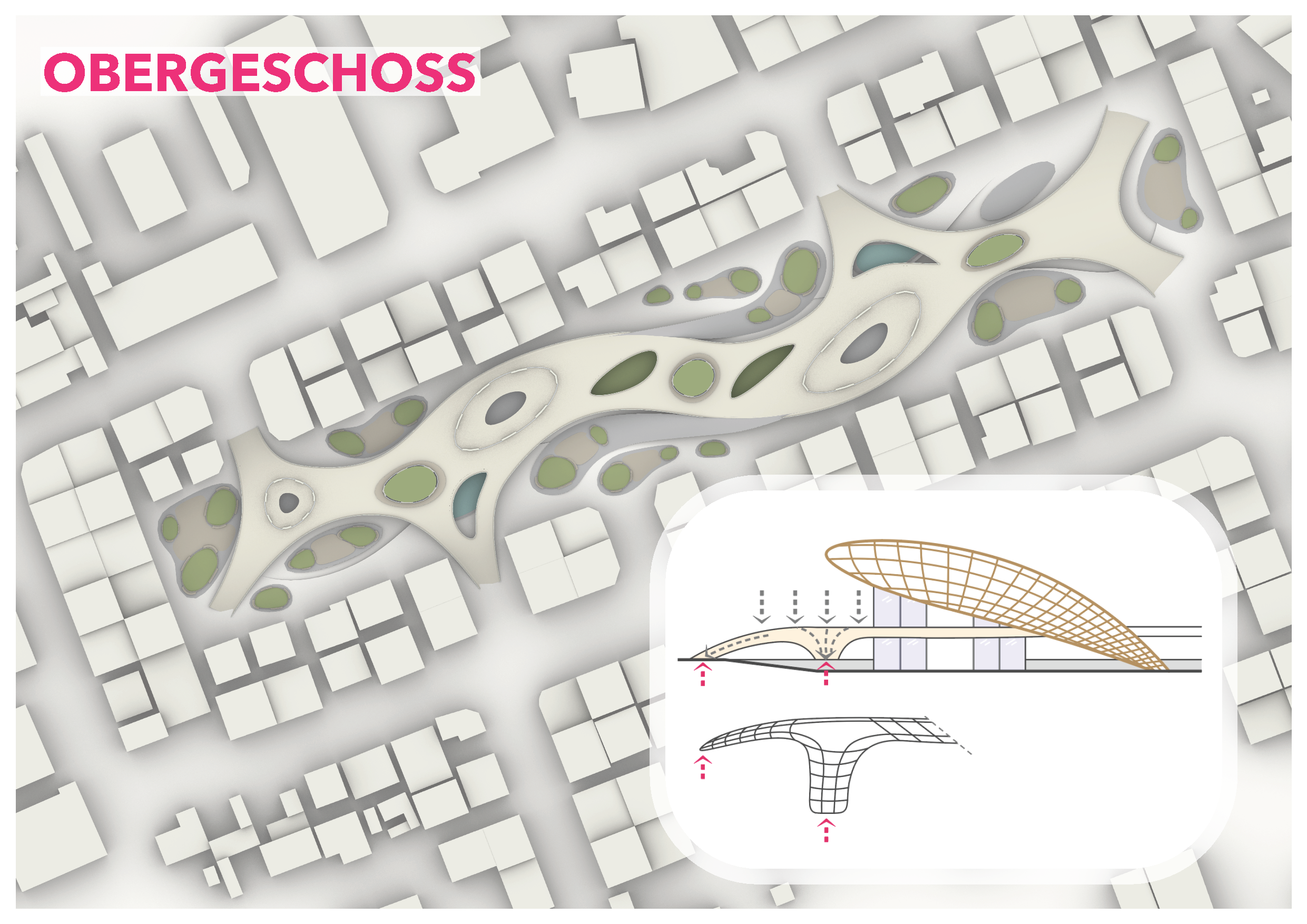
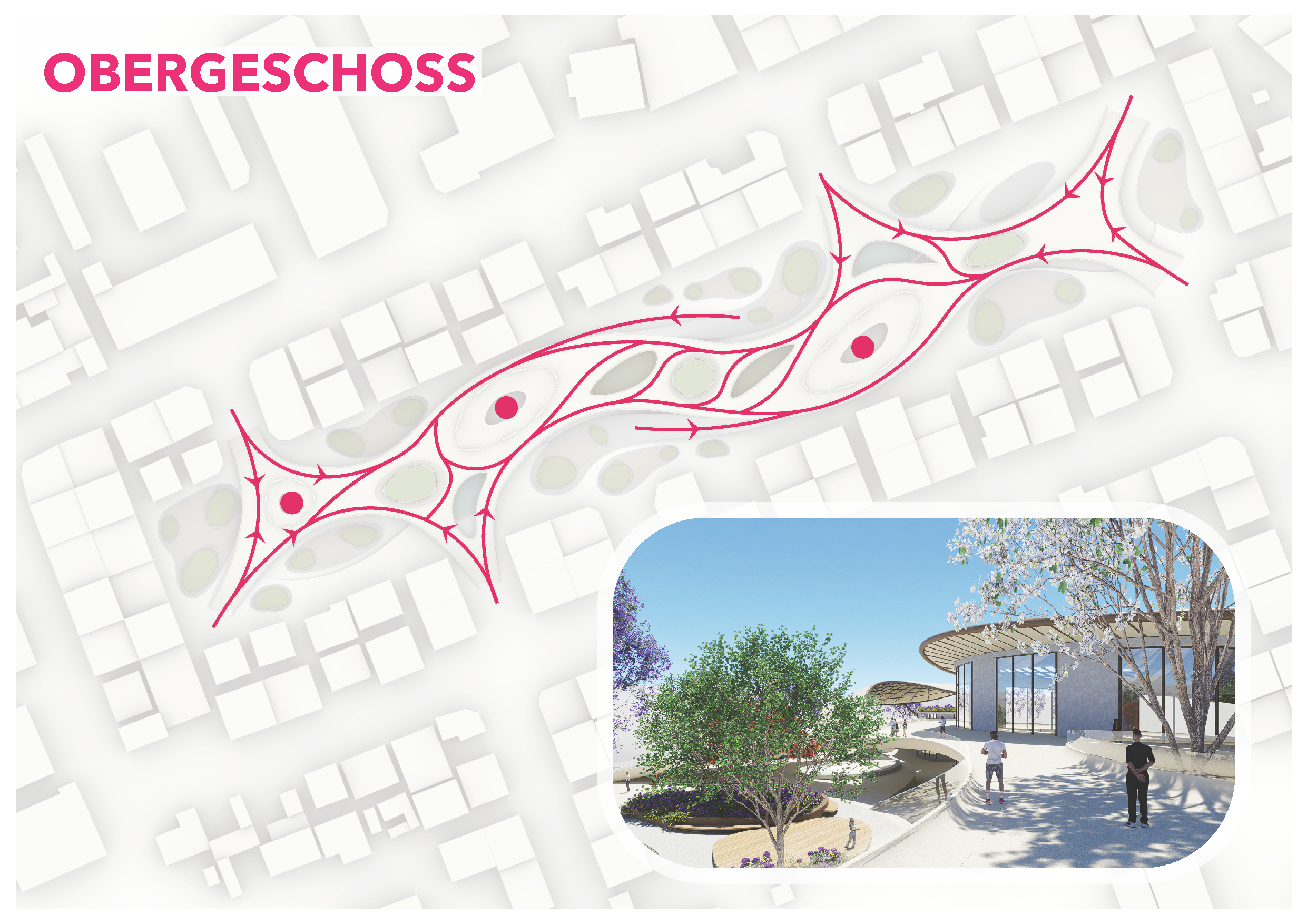
Essentially, we were trying to achieve a structure that mimics a sort of naturally based growth, in order to see if an efficient Architecture is subsequent. While we were experimenting with these concepts, we learned to coordinate certain growing schemes to achieve multiple necessities in planning, such as the integration of cooling effects into the built form or the specific placing of the “blobs” at certain scales inorder to build paths.
Eventhough the buildings should activate certain functions on a city scale, the form should allow for future adaptions, respecting future requirements. That is why we chose to go for an Atrium typology, as it has proven to be very versatile for many uses throughout history.
Roof
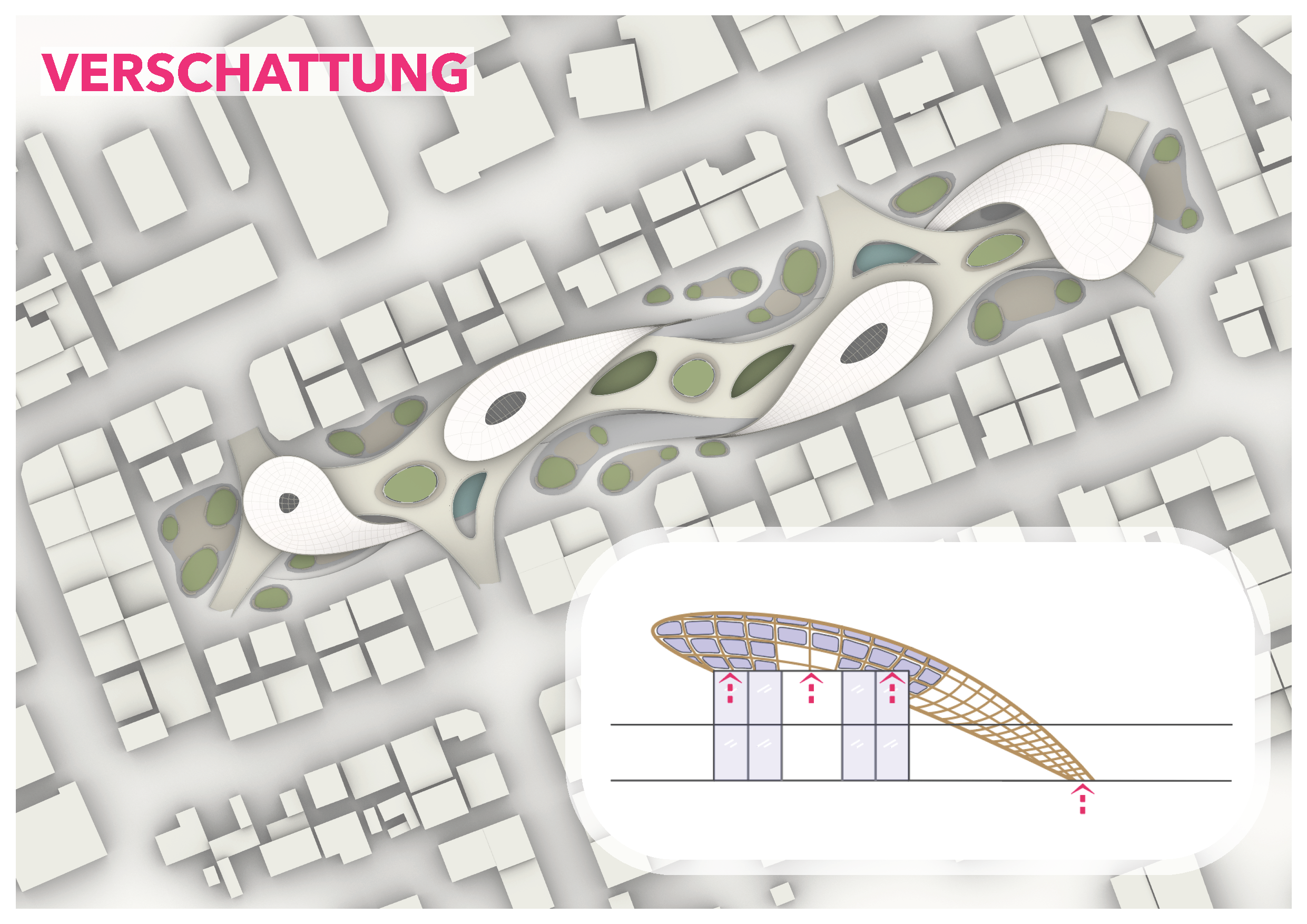
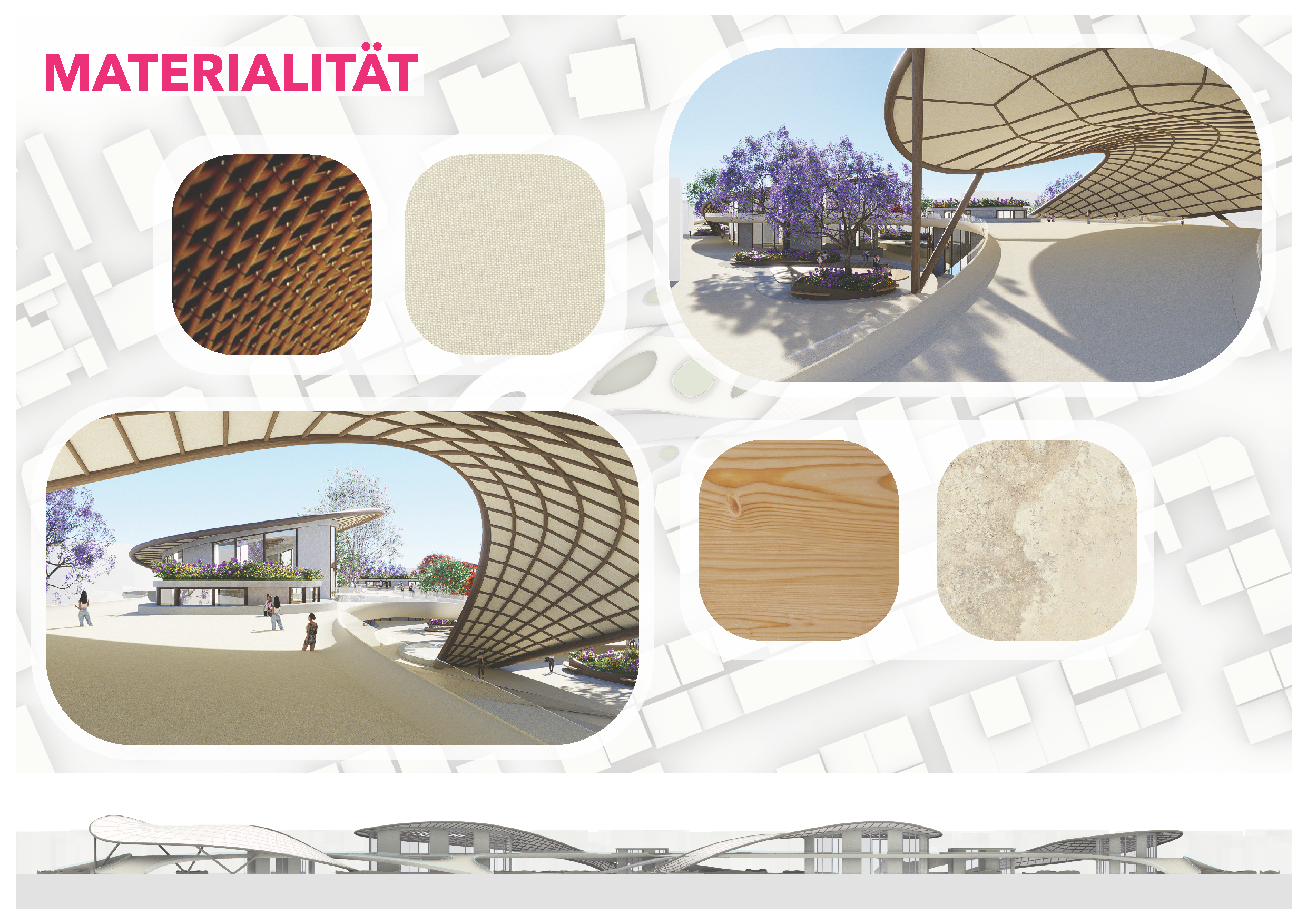
While most of the building is accessible, we decided to top of the structure with a lightweight construction that offers shade and reduces the temperature of the site. For the materials, we tried to find a balance between sustainability and visual integration into the surroundings.
It probably comes to no ones surprise, when I say that adding greenery to a desert doesnt come with many issues. There aren’t many plants that grow under these circumstances, yet those that do, have been made an essential part of the project. We believe that if Dubai wants to stay relevant longterm, they must find a way to work with nature, and maybe this project is one way to achieve that goal.
Description
Aleksandar Cosic, Sophie Steinwendtner, Clara Ripka
Evolutionary Architectures: future morphologies and spatial variations
Wintersemester 2023
Tutors: Tala Vaziri, Cuno Brullmann

